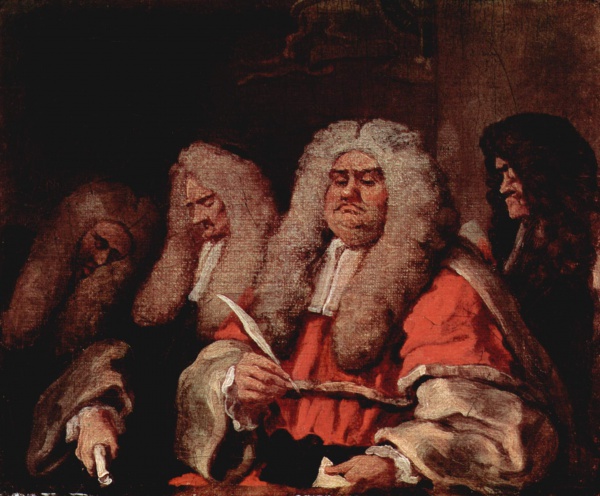Facts About The Bench
"The Bench" is a compelling work of art crafted by English artist William Hogarth in 1758. Available in both painting and print forms, it serves as Hogarth's response to critics who had dismissed him merely as a caricaturist. He sought to delineate the clear distinction between character painting and caricature, akin to the difference between comedy and tragedy.
In "The Bench" Hogarth depicts four judges from the Court of Common Pleas, lampooning their apparent disengagement and ineptitude. Each judge is portrayed as either distracted or asleep, symbolizing Hogarth's critique of their moral failings despite the authority their robes ostensibly convey. Among them, Sir John Willes, notorious for his severe judgments, is particularly singled out.
Hogarth subsequently altered the original print, such as by substituting the King's Arms with exaggerated caricatured heads. Several distinctions are evident between the painting and the print, including the judges' expressions and the objects surrounding them. The print also features a detailed inscription where Hogarth elucidates his motivations for creating the work.
The original painting was eventually acquired by George Hay and later found its home at the Fitzwilliam Museum in Cambridge. Both the painting and prints were auctioned in 1825. "The Bench" is significant not merely for its satirical examination of the legal profession but also for its exploration of character painting versus caricature, a theme Hogarth had previously tackled in his oeuvre.
For scholars of Hogarth's artistic development and thematic concerns, "The Bench" offers profound insights. It is a masterful blend of humor and critique, encapsulating the human condition through the prism of the legal world.

 Ireland
Ireland